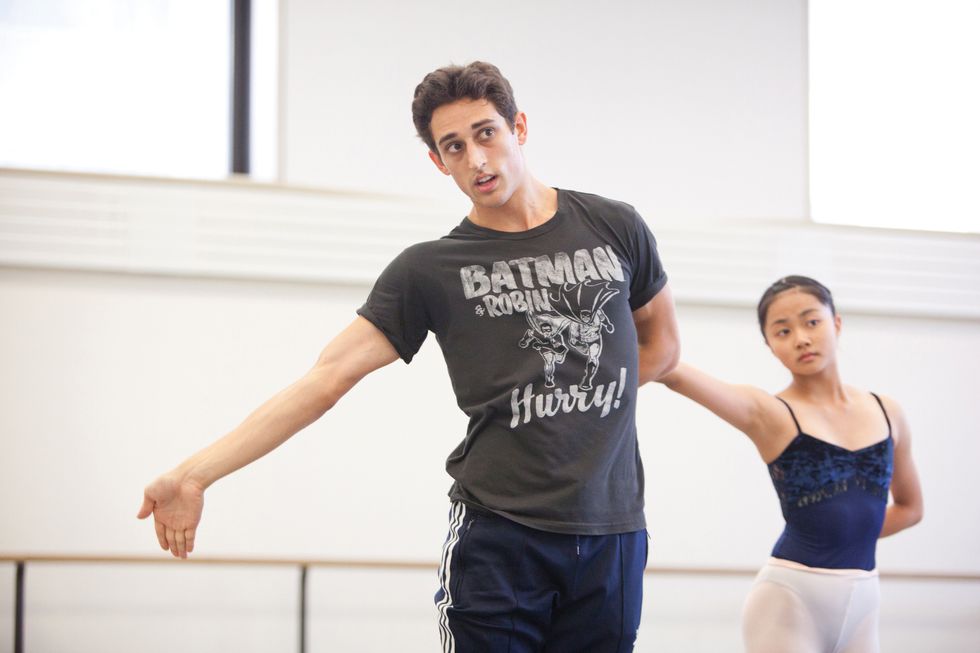Piece by Piece: Tips for First-Time Choreographers
“I was a little too ambitious when I made my first piece,” Wade Schaaf remembers, with a laugh. Schaaf, now a member of Thodos Dance Chicago, struggled with his choreographic debut, a piece for the Omaha Theater Ballet. “I was so nervous that I had everything choreographed in advance, almost down to each breath the dancers would take!” Like many first-time choreographers, he learned the hard way that writing a good recipe is important—but not as much as tasting as you go along.
If you’re interested in choreographing, the thought of facing a studio full of dancers waiting for your instruction might be scary enough to stop you in your tracks. But while making a dance can definitely be stressful, the reward, all choreographers agree, is worth the hassle. DS asked six successful dancemakers about their advice for first-timers.
Get Inspired
Once you know you want to choreograph, where can you look for inspiration? “The muse that sits on your shoulder and tells you what to do is a myth,” says Kimi Okada, a founding member of ODC Dance in San Francisco. “And it’s pretty hard to make a dance about an abstract concept, like ‘grief’ or ‘happiness.’ Quite often, you’ll just end up with clichés.”
To figure out the mood or theme of a new work, New York City Ballet corps member Justin Peck, who made his first ballet in 2009, suggests devoting a lot of time to brainstorming. After finding a piece of music that speaks to him, “I’ll listen to it hundreds of times,” he says.
When it comes to the movement itself, Okada suggests giving yourself a simple task, like creating a few phrases of material based on what you do when you get out of bed in the morning. Then, play around with that movement. Try speeding a phrase up, slowing one down or rearranging the sequence. Choreography born from a simple set of limitations, she explains, “can suggest emotional content a lot more effectively than trying to portray it directly.”
Be Prepared—But Not Rigid
Prepare for rehearsals ahead of time by having your music on hand and sketching out what you aim to complete each day. But once you’re in the studio, be open to deviating from your plan and to what a dancer might add to your concept. Even the best ideas can get better. Jessica Miller Tomlinson, a colleague of Schaaf’s at TDC, says she’s “never 100 percent sold” on what she’s made. “If something happens to change while we’re working, that’s okay,” she says. And keep the bigger picture in mind. “When I’m choreographing, part of me is always focused on the creation of the whole work, not just the three or four hours I have in the studio that day,” Peck says.
The size of your cast might also determine how you proceed. Kate Jablonski, who directs Beyond Words Dance Company in the Chicago suburbs, says formations for dances that use all of her 31 company members are largely mapped out in advance, since coordinating many bodies requires a lot of planning. But if she’s choreographing a solo or duet, she’s more comfortable creating on the spot.
Get Your Message Across
Some dancers are quick to learn new material. Others may need time to comprehend your steps. Jessica Lang, who’s worked with companies from Joffrey Ballet to Hubbard Street 2, says that paying close attention to how your dancers learn movement is one of a choreographer’s most important skills. Teach your movement in a way that makes sense to the dancer who’ll perform it, whether that’s dancing with them in front of a mirror or telling the story of how you created a phrase.
That said, don’t worry if dancers don’t immediately ace their moves. “That means they have something to work toward,” Jablonski says. And if progress grinds to a halt, set the problematic moment aside and move on to something else. “Let them think about it overnight,” Lang says, and go back to a section that’s already finished. Take a mental break, answer any questions your dancers have and give them a chance to get comfortable in your choreography. As Tomlinson points out, “If I let the dancers run it a few times, a lot of the steps clean themselves.”
Keep Things Fresh
Above all else, stay true to your unique voice. “It’s easy for beginning choreographers to look at a dance they really like and try to imitate the things that they like about it,” Jablonski says. It’s good to be inspired by others, but as you work, check in with yourself every once in a while to make sure that the dance you’re making is coming from you.
At the end of the day, remember to put things in perspective. “Don’t put too much pressure on yourself to make something ‘good,’ because that’s when you end up with a disaster,” Jablonski says. “It’s dance. It’s fun!”




